
Operation Market Garden was an Allied military operation during the Second World War fought in the German-occupied Netherlands from 17 to 25 September 1944. Its objective was to create a 64 mi (103 km) salient into German territory with a bridgehead over the Nederrijn, creating an Allied invasion route into northern Germany. This was to be achieved by two sub-operations: seizing nine bridges with combined US and British airborne forces ("Market") followed by British land forces swiftly following over the bridges ("Garden").

A paratrooper is a military parachutist—someone trained to parachute into a military operation, and usually functioning as part of an airborne forces. Military parachutists (troops) and parachutes were first used on a large scale during World War II for troop distribution and transportation. Paratroopers are often used in surprise attacks, to seize strategic objectives such as airfields or bridges.

Airborne forces are ground combat units carried by aircraft and airdropped into battle zones, typically by parachute drop. Parachute-qualified infantry and support personnel serving in airborne units are also known as paratroopers.
Operation Dingson was an operation in the Second World War, conducted by 178 Free French paratroops of the 4th Special Air Service (SAS), commanded by Colonel Pierre-Louis Bourgoin, who jumped into German occupied France near Vannes, Morbihan, Southern Brittany, in Plumelec, on the night of 5 June 1944 with Captain Pierre Marienne and 17 men, then advanced to Saint-Marcel.

Operation Ladbroke was a glider landing by British airborne troops during the Second World War near Syracuse, Sicily, that began on 9 July 1943 as part of Operation Husky, the Allied invasion of Sicily. The first Allied mission using large numbers of the aircraft, the operation was carried out from Tunisia by glider infantry of the British 1st Airlanding Brigade, commanded by Brigadier Philip Hicks, with a force of 136 Hadrians and eight Airspeed Horsas. The objective was to establish a large invasion force on the ground near the town of Syracuse, secure the Ponte Grande Bridge and ultimately take control of the city itself with its strategically vital docks, as a prelude to the full-scale invasion of Sicily.

Operation Fustian was an airborne forces operation undertaken during the Allied invasion of Sicily in July 1943 in the Second World War. The operation was carried out by Brigadier Gerald Lathbury's 1st Parachute Brigade, part of the British 1st Airborne Division. Their objective was the Primosole Bridge across the Simeto River. The intention was for the brigade, with glider-borne forces in support, to land on both sides of the river. They would then capture the bridge and secure the surrounding area until relieved by the advance of British XIII Corps, which had landed on the south eastern coast three days previously. Because the bridge was the only crossing on the river and would give the British Eighth Army access to the Catania plain, its capture was expected to speed the advance and lead to the defeat of the Axis forces in Sicily.

No. 4 Commando was a battalion-sized British Army commando unit, formed in 1940 early in the Second World War. Although it was raised to conduct small-scale raids and harass garrisons along the coast of German occupied France, it was mainly employed as a highly trained infantry assault unit.
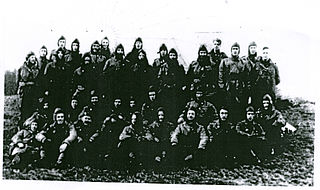
Operation Colossus was the codename given to the first airborne operation undertaken by the British military, which occurred on 10 February 1941 during World War II. The British airborne establishment was formed in June 1940 by the order of the British Prime Minister, Winston Churchill, in response to the successful airborne operations conducted by the German military during the Battle of France. Training began immediately but a shortage of proper equipment and training facilities, as well as bureaucratic difficulties, meant that only a small number of volunteers could immediately be trained as parachute troops. The first airborne unit to be formed was actually a re-trained Commando unit, No. 2 Commando, which was subsequently renamed as No. 11 Special Air Service Battalion and numbered approximately 350 officers and other ranks by September 1940. The battalion finished its training in December 1940 and in February 1941 thirty-eight members of the battalion, known as X Troop, were selected to conduct an airborne operation, which was intended to test the capability of the airborne troops and their equipment, as well as the ability of the Royal Air Force to accurately deliver them.

Operation Loyton was the codename given to a Special Air Service (SAS) mission in the Vosges department of France during the Second World War.
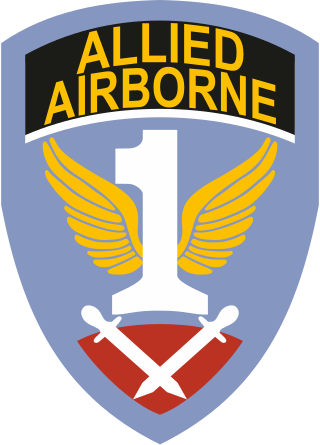
The First Allied Airborne Army was an Allied formation formed on 2 August 1944 by the order of General Dwight D. Eisenhower, the Supreme Allied Commander of the Allied Expeditionary Force.
The Netherlands entered World War II on May 10, 1940, when invading German forces quickly overran the country. On December 7, 1941, after the attack on Pearl Harbor, the Netherlands government in exile also declared war on Japan. Operation Market Garden, which started in 1944, liberated the southern and eastern parts of the country, but full liberation did not come until the surrender of Germany on May 5, 1945.

The 504th Infantry Regiment, originally the 504th Parachute Infantry Regiment, is an airborne forces regiment of the United States Army, part of the 82nd Airborne Division, with a long and distinguished history. The regiment was first formed in mid-1942 during World War II as part of the 82nd Airborne Division and saw service in Sicily, Italy, Anzio, the Netherlands, Belgium and Germany.
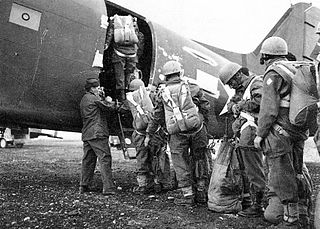
Operation Herring was the last World War II airborne combat drop in Europe.

American airborne landings in Normandy were a series of military operations carried by the United States as part of Operation Overlord, the invasion of Normandy by the Allies on June 6, 1944, during World War II. In the opening maneuver of the Normandy landings, about 13,100 American paratroopers from the 82nd and 101st Airborne Divisions, then 3,937 glider infantrymen, were dropped in Normandy via two parachute and six glider missions.

The Battle of Graignes was part of the American airborne landings in Normandy during the early stages of Operation Overlord in World War II, fought between June 10–12, 1944 in Graignes, France. During the engagement, American paratroopers of the U.S. 82nd Airborne Division held the town for two days against the 17th SS Panzergrenadier Division Götz von Berlichingen. This action delayed the 17th SS Panzergrenadier's counterattack on Carentan, which was repulsed at the Battle of Bloody Gulch on June 13. After retaking Graignes, the German troops massacred 44 civilians and a number of prisoners of war taken in the capture of an American aid station, and set fire to the town.
Mission Boston was a parachute combat assault at night by Major General Matthew Ridgway's U.S. 82nd Airborne Division on June 6, 1944, part of the American airborne landings in Normandy during World War II. Boston was a component element of Operation Neptune, the assault portion of the Allied invasion of Normandy, codenamed Operation Overlord. 6,420 paratroopers jumped from nearly 370 C-47 Skytrain troop carrier aircraft into an intended objective area of roughly 10 square miles (26 km2) located on either side of the Merderet river on the Cotentin Peninsula of France, five hours ahead of the D-Day landings.
Operation Bulbasket was an operation by 'B' Squadron, 1st Special Air Service (SAS), behind the German lines in German occupied France, between June and August 1944. The operation was located to the east of Poitiers in the Vienne department of south west France; its objective was to block the Paris to Bordeaux railway line near Poitiers and to hamper German reinforcements heading towards the Normandy beachheads, especially the 2nd SS Panzer Division – Das Reich.

The British airborne operations in North Africa were conducted by British paratroopers of the 1st Parachute Brigade, commanded by Brigadier Edwin Flavell, as part of the Tunisian campaign of World War II, over the period between November 1942 and April 1943.
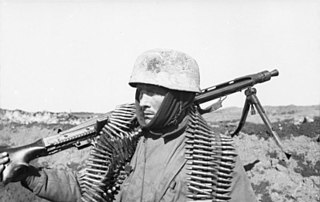
The Fallschirmjäger were the paratrooper branch of the German Luftwaffe before and during World War II. They were the first paratroopers to be committed in large-scale airborne operations. Throughout World War II, the commander of the branch was Kurt Student.
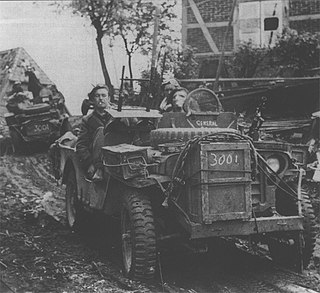
Operations Wallace and Hardy I were two British Special Air Service operations during the Second World War that took place from 27 July to 19 September 1944. Initially two sets of operations by 2nd Special Air Service, they were eventually amalgamated into one. Their objective was to disrupt German lines of communication, coordinate the activities of the French Resistance and prevent German reinforcements moving to the Normandy beachheads.
















